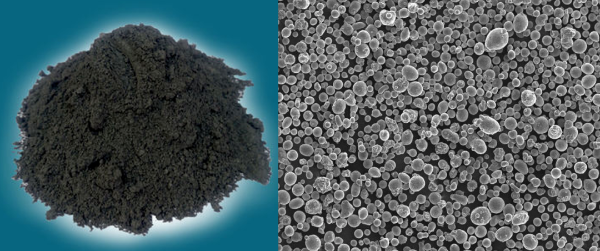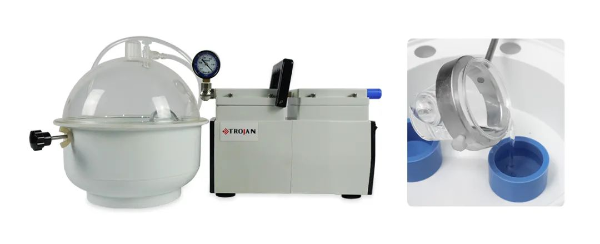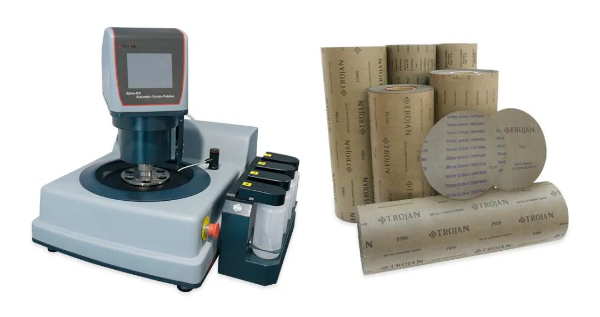Metal powder refers to a group of metal particles with a size of less than 1 mm. It includes single metal powder, alloy powder and some refractory compound powder with metallic properties, and is the main raw material of powder metallurgy. Metal monomers are generally silvery-white, and when the metal is under certain conditions, it is a black powder. Most of the metal powder is black.
The preparation method of metal powder is usually divided into mechanical method and physical chemical method according to the principle of transformation. It can be directly refined from solid, liquid and gaseous metals, and can be transformed from metal compounds in different states through reduction, pyrolysis and electrolysis. Carbides, nitrides, borides and silicides of refractory metals can generally be prepared directly by compounding or reduction-compounding methods. The shape, structure and particle size characteristics of the same powder often vary greatly due to different manufacturing methods. The most widely used methods of powder production are reduction, atomization and electrolysis.
Metal powders are widely used in products such as powder metallurgy, 3D printing, solid fuels, audio cassettes, explosives, fireworks, pigments, batteries and catalysis.

Preparation scheme
Mounting
The piles of metal powder contain a lot of voids, and it is difficult to infiltrate the resin into the bottom of the powder layer under normal pressure, especially when the stacked powder layer is thick, due to the air pressure, the resin is even more difficult to penetrate. Therefore, in order to ensure that each powder can be well encapsulated by epoxy resin, vacuum impregnation is recommended to minimize the pressure of the gap between the powders, so that the epoxy resin can flow into the gap smoothly. Spread the powder evenly on the bottom of the mold, and its thickness should not be greater than 1mm, otherwise it will increase the fluid resistance of resin infiltration. But not too thin, or it is easy to over-grind during the grinding stage. Vacuum casting with TJ2562, which has high permeability (low viscosity) and edge retention, allows the metal powder to be well encapsulated by the resin after several evacuation cycles.

Grinding
Since many metal powders are spherical and the proportion of powder per unit volume is relatively large, if a coarser abrasive paper is used to start grinding, the powder particles will easily fall off. Generally, grinding should be done from P2000 sandpaper, if the metal powder particles are hard phase, diamond grinding disc of P2000 should be used to start grinding. Normally grinding to P2500 is sufficient for polishing. Polishing in order to make the polishing surface flat without floating convex, should use harder woven cloth, such as SC polishing cloth with diamond polishing solution. In the subsequent polishing process, in order to remove the small scratches caused by the previous polishing and improve the brightness of the sample surface, you can use a medium-pile or short-pile polishing cloth, such as YR polishing cloth with alumina suspension and special silica suspension for fine polishing to obtain a flat and smooth surface.

Trojan recommends the following grinding and polishing processes for reference:
|
Step |
1 |
2 |
3 |
4 |
|
Surface |
SiC abrasive paper/diamond grinding disc |
SC polishing cloth |
YR polishing cloth |
Final Red polishing cloth |
|
Grain size |
P2000~P2500 |
1μm diamond suspension |
0.05 alumina suspension |
Silica suspension |
|
Coolant |
Water |
/ |
/ |
/ |
|
Individual specimen load /N |
23 |
23 |
21 |
20 |
|
Time/ s |
120 |
180 |
90 |
60 |
|
Speed of head/rpm |
80 |
80 |
80 |
80 |
|
Speed of disc/rpm |
300 |
150 |
120 |
120 |
|
Direction |
Same |
Same |
Same |
Reverse |
The final polishing with alumina suspension should be done with reasonable control of the polishing effort and time to prevent the conductor and insulating layers of the specimen from producing large floating bumps, or by using a lint-free flat ZN polishing cloth instead. In order to simplify the polishing procedure, YR/Final Red polishing cloth can also be used to mix alumina and silica suspension for simultaneous polishing, using silica polishing parameters.


 中文简体
中文简体 英语
英语 西班牙语
西班牙语 德语
德语







.jpg?imageView2/2/w/400/format/jpg/q/75)











